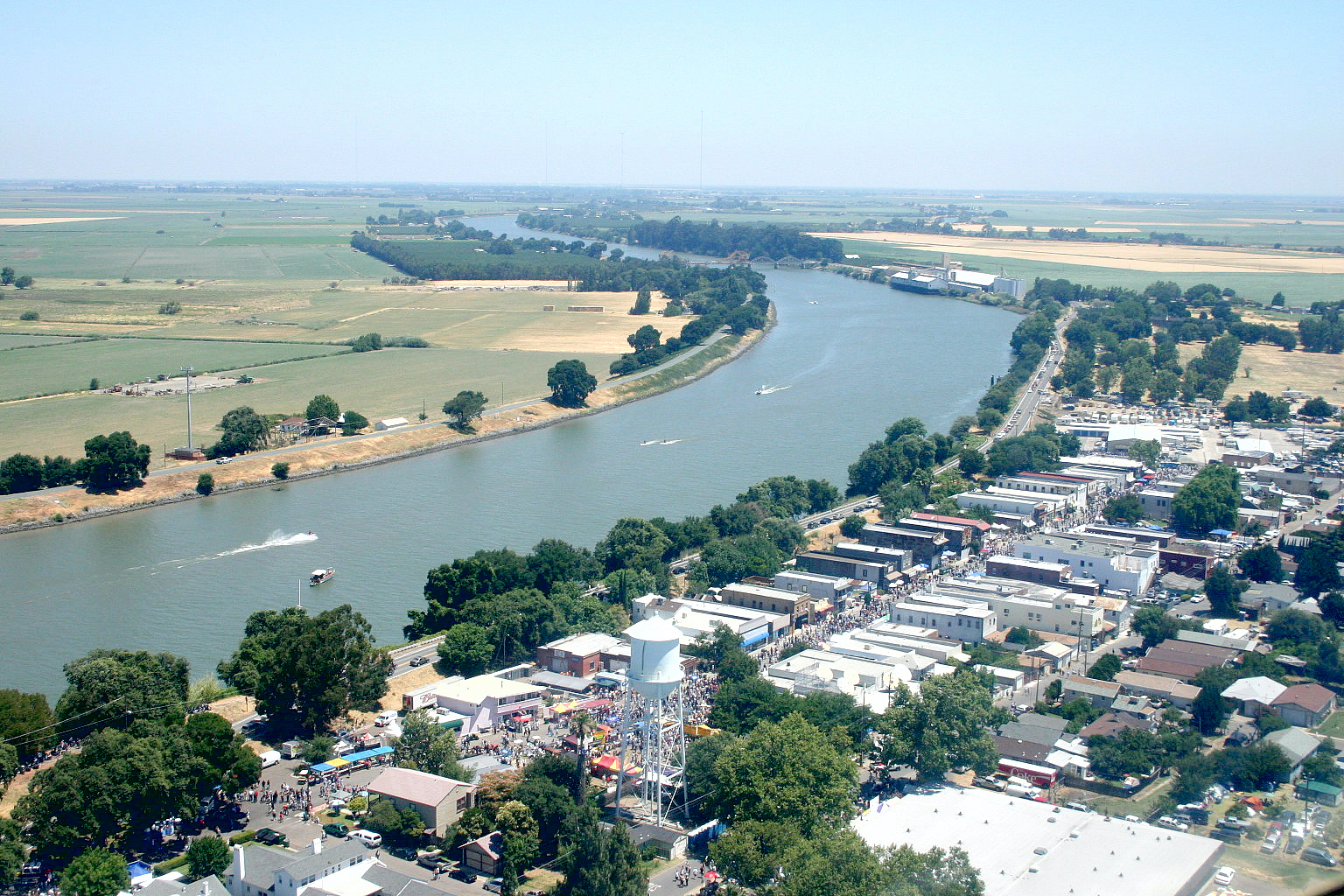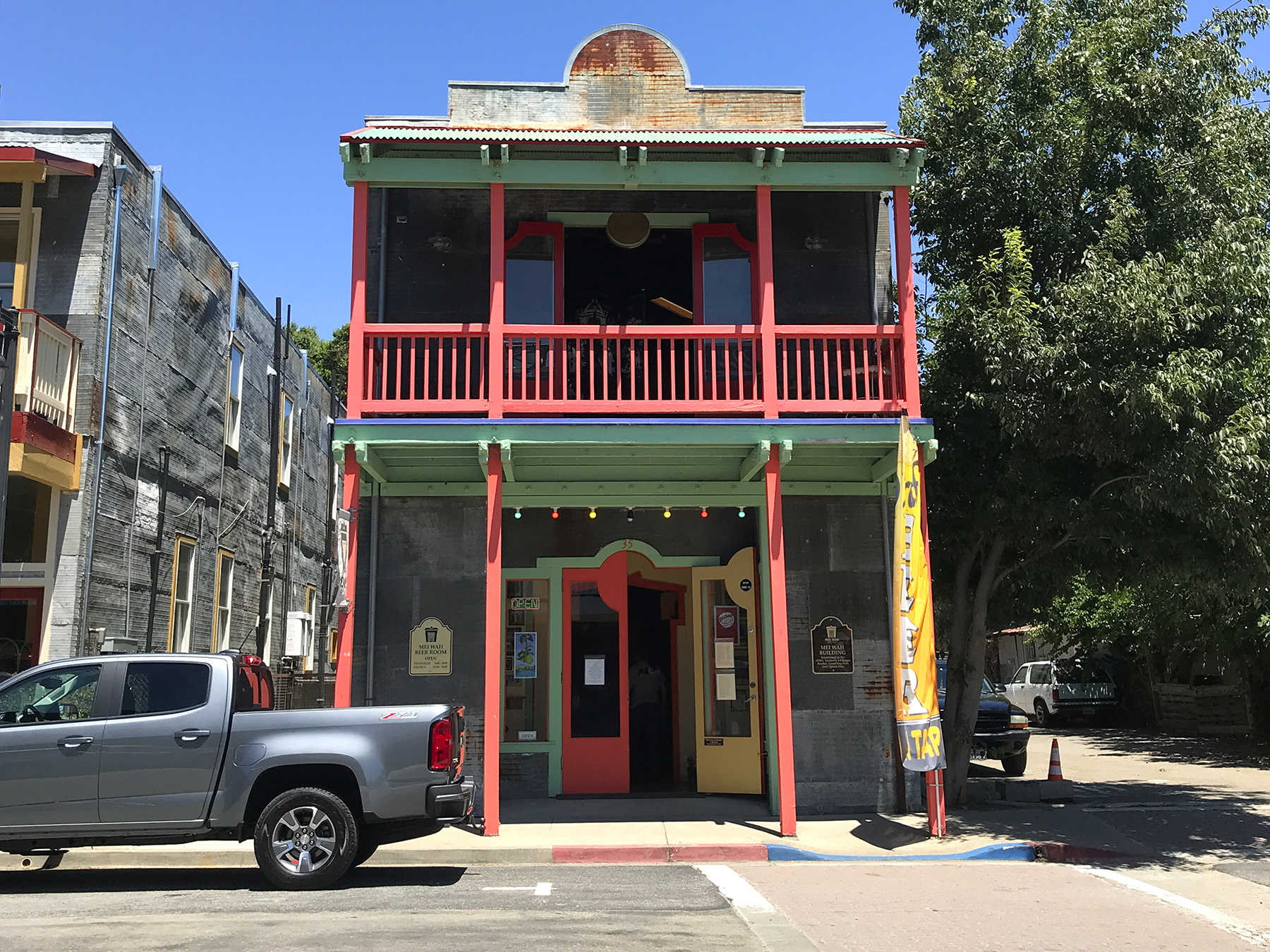By Jay Landers
The city of Isleton is on Andrus Island in the Sacramento-San Joaquin Delta Region, the sprawling, low-lying expanse of Northern California formed by the confluence of the Sacramento and San Joaquin rivers. Indeed, much of Isleton, which has a population of approximately 1,000 people, is situated beside the Sacramento River. Because of land subsidence, Isleton, like most of the delta, has an elevation below the adjacent river and must rely on an extensive, and aging, levee system to stay dry. However, a single levee breach could mean devastation for the small community, which experienced just such an event 50 years ago.
Looking to prevent another such disaster, Isleton — which contains two historic districts and has roots that date to the 19th century — is taking a unique approach. The city is in the process of forming the Delta Region Geologic Hazard Abatement District, the first such district in California seeking to combat levee failure rather than more traditional geologic hazards such as landslides, earth movement, and erosion.

In essence, the Delta Region GHAD will help protect Isleton against flooding resulting from embankment failure. If successful, the new entity is expected to help lower the high premiums that some Isleton property owners pay for flood insurance.
‘Sword of Damocles’
In 1979, California allowed for the creation of GHADs as a means of enabling property owners to mitigate geologic hazards posing risks to their property. Independent political subdivisions of the state, GHADs aim to prevent, mitigate, and abate geologic hazards within their boundaries. Today, more than 35 GHADs operate in California, according to the website of the California Association of GHADs. Such districts typically are funded by means of supplemental property assessments, which must be approved by property owners within the GHAD.
In March, the engineering firm ENGEO Inc. announced that it had been selected by Isleton to lead the Delta Region GHAD. The company has been involved with GHADs since 1986, when it helped form the Blackhawk GHAD to address landslides in Contra Costa County. ENGEO currently manages about 15 GHADs, says Uri Eliahu, G.E., P.E., the company’s president and CEO and the founding director and current president of the California Association of GHADs.
For Isleton, the Delta Region GHAD is needed to help allay the chronic concerns of flooding faced by the low-lying city, says Charles Bergson, P.E., the city manager and acting city engineer for Isleton. “We’re living under a sword of Damocles,” Bergson says.
History supports such a claim. In 1972, repairs to a section of the nearly 30 mi long levee system surrounding Isleton caused a breach. “Within a couple days of the breach, the town itself was flooded,” says Josef Tootle, G.E., P.E., a principal at ENGEO.
Along with the possibility of inundation from levee failure, Isleton also must contend with flood concerns resulting from heavy rains. “When it rains continuously and heavily, it’s tense and it’s dangerous,” Bergson notes. “The rain has no place to go.” When such rains occur, Isleton’s wastewater treatment facility is at risk of flooding and water fills the city’s streets, he says.
Plan of control
A key function of a GHAD is to develop a plan of control to address the particular geologic threat for which the district was formed. In the case of the Delta Region GHAD, the plan of control includes measures to address flooding resulting from levee failure as well as potential erosion damage and failure of drainage facilities that are designed to remove water from the city and pump it out to the Sacramento River and adjacent sloughs, Tootle says.
“One of the leading alternatives that’s currently being considered in advance of any flood event is to improve some of the adjacent street systems to allow for improved flood-fighting access,” Tootle says. The idea is to raise the elevation of certain streets to provide a “platform that temporary flood walls could be erected on,” he notes. Depending on the location of a levee breach, Isleton could have as much as a few days to prepare for the impending high water.
“That work is something that the GHAD would help fund,” Tootle says. In the event of flooding, the GHAD also would “take the lead in erecting the temporary flood protection,” he says. Besides the funding it raises from property assessments, the Delta Region GHAD will seek state and federal funding to help defray the costs of its activities. Meanwhile, the district would not have responsibility for conducting levee maintenance or overseeing local drainage operations, as those functions are handled by other entities.
At the same time, the GHAD also will provide cash assistance to help residents in the event of flooding, Bergson says. “If something adverse happens, the GHAD will front $10,000 (per residence) to mitigate the immediate problems,” he says.
‘A perfect model’
Since their creation in California state law in 1979, GHADs have “mostly dealt with large-scale slope stability issues,” Eliahu says. “Applying this model to geologic hazards in inland flat areas just didn’t seem obvious.”
For ENGEO, this thinking changed after the 2005 destruction of much of New Orleans following levee failures resulting from Hurricane Katrina. “We thought (GHADs were) a perfect model” for addressing risks associated with levee failures, he says. “The arguments for GHADs in flood-prone communities have only strengthened in recent years.”
The “other impetus” for forming a GHAD to mitigate against inundation from levee failures, Eliahu says, is the advantages the approach offers relative to simply relying on flood insurance provided by the National Flood Insurance Program run by the U.S. Federal Emergency Management Agency. “In general, these communities (in the delta) have been paying a lot and really receiving nothing tangible in return from the NFIP,” he maintains.

The GHAD approach also motivates local communities to try to reduce their flood risk, rather than simply paying to insure against it. “Under the NFIP, there’s no particular incentive for the community to reduce its risks,” Eliahu says. “They just pay into an insurance pool, and if something happens, they get paid. Under this (GHAD) scenario, where the community is funding this entity, there is incentive to reduce the risk and manage the levees and improve them as necessary.”
The high premiums that some Isleton residents pay for insurance from the NFIP also helped motivate the formation of the Delta Region GHAD. “That’s really been the catalyst within this community to look for a different model,” Tootle says. “There are constituents of the city who are paying a whole lot for insurance that isn’t really lined up with the risk they’re actually facing.”
Actions taken to reduce Isleton’s flood risk also could attract private insurers to offer insurance coverage in the area, Tootle says. The resulting competition could help drive down flood insurance premiums, he says.
Possible expansion
In its current form, the boundaries of the Delta Region GHAD are coterminous with Isleton’s boundaries. However, this may change over time. California law allows other communities to join a GHAD, Eliahu says, even communities that are not physically contiguous with the district. In particular, other flood-prone Delta communities could make good candidates for annexing into the Delta Region GHAD, he notes.
Currently, GHADs operate only in California. Such districts are “very much a creature of California laws,” Eliahu says. “That particular structure doesn’t exist anywhere outside of California. However, the concept and the funding mechanisms certainly could be applied everywhere.”



